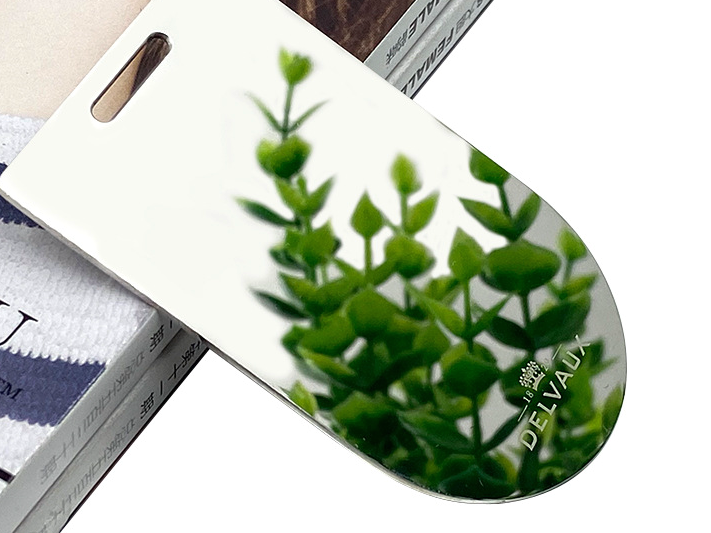The Art of Polishing CNC Machining Parts: Achieving a Flawless Smooth Finish
Introduction
Polishing is a precise finishing technique applied after CNC machining processes, designed to refine surface roughness and achieve flawless, smooth finishes. By mechanically removing surface irregularities using abrasive materials or specialized polishing tools, the process attains exceptional smoothness, typically below Ra 0.2 μm. Polishing significantly enhances part aesthetics, reduces surface friction, improves corrosion resistance, and optimizes component performance, critical for high-end applications requiring perfect surface quality.
Widely employed across industries like automotive, aerospace, medical devices, and luxury consumer products, polishing is ideal for metals such as stainless steel, aluminum alloys, titanium alloys, and precision-engineered plastics. It can treat intricate geometries, precision surfaces, and delicate components and enables manufacturers to deliver visually impressive, smooth-finished CNC components optimized for demanding operational environments.
The Art of Polishing CNC Machining Parts: Achieving a Flawless Smooth Finish
Scientific Principles & Industrial Standards
Definition:
Polishing involves controlled mechanical abrasion of CNC-machined part surfaces with progressively finer abrasive media or polishing compounds, attaining ultra-smooth finishes typically below Ra 0.2 μm. The process refines surface textures, enhances appearance, and improves functional performance.
Governing Standards:
ISO 4287: Surface texture measurement standards (Ra, Rz values)
ASME B46.1: Surface roughness and waviness measurement guidelines
ASTM B912: Standard specification for passivation of stainless steel (post-polishing treatments)
Process Function and Cases
Performance Dimension | Technical Parameters | Application Cases |
|---|---|---|
Surface Smoothness | Ra 0.05–0.2 μm achieved consistently | Medical implants, precision valves, optical equipment |
Visual Aesthetics | Mirror-like or satin finishes | Luxury watch cases, automotive trims, decorative elements |
Corrosion Resistance | Enhanced passivation properties post-polish | Surgical instruments, marine fittings, aerospace hardware |
Reduced Friction | Surface friction coefficient reduced by 30–50% | High-precision bearings, hydraulic cylinder rods |
Surface Finish Classification
Technical Specification Matrix
Polishing Method | Key Parameters & Metrics | Advantages | Limitations |
|---|---|---|---|
Mechanical Abrasive Polishing | Ra: 0.1–0.3 μm; grit progression #400–#2000 | Versatile, excellent surface uniformity | Labor-intensive for complex geometries |
Electrolytic Polishing | Ra: 0.05–0.2 μm; uniform surface leveling | Consistent surface smoothness, enhanced corrosion resistance | Limited to conductive metals |
Buffing (Cloth Wheel Polishing) | Ra: 0.02–0.1 μm; mirror-like finish | Exceptional brightness and clarity | Difficult for intricate features |
Vibratory Polishing | Ra: 0.2–0.5 μm; uniform mass finishing | Efficient processing of multiple components | Limited ultra-smoothness achievable |
Chemical Polishing | Ra: 0.1–0.3 μm; consistent micro-leveling | Excellent for delicate or intricate parts | Chemical handling, less material versatility |
Selection Criteria & Optimization Guidelines
Mechanical Abrasive Polishing
Selection Criteria: Optimal for components requiring controlled surface refinement and precise roughness specifications.
Optimization Guidelines: Start with coarser grit abrasives (#320–#400), progressively move finer (#800–#2000), ensure consistent pressure and speed control, and apply lubricants or coolants to avoid overheating.
Electrolytic Polishing
Selection Criteria: Ideal for corrosion-sensitive applications, uniform surface leveling, and achieving extremely smooth surfaces.
Optimization Guidelines: Precisely control electrolyte temperature (45–65°C), current density (20–50 A/dm²), and processing time (1–10 minutes) for best results.
Buffing (Cloth Wheel Polishing)
Selection Criteria: Preferred for high-gloss finishes on decorative components where aesthetics are paramount.
Optimization Guidelines: Utilize soft cloth wheels with fine polishing compounds (rouge or diamond paste), moderate rotational speeds (1000–3000 rpm), and carefully control polishing pressure to achieve mirror finishes.
Vibratory Polishing
Selection Criteria: Suitable for efficiently polishing large batches of small to medium-sized CNC parts simultaneously.
Optimization Guidelines: Choose appropriate media types (ceramic or plastic) and sizes; maintain optimal vibration frequencies (1200–1800 rpm) and processing times (2–8 hours) for uniform polishing.
Chemical Polishing
Selection Criteria: Recommended for delicate parts with intricate geometries that require uniform polishing without mechanical stresses.
Optimization Guidelines: Maintain precise chemical bath composition and temperature (40–70°C), control immersion times (2–15 minutes), and follow strict rinsing protocols to achieve consistent results.
Material-Finish Compatibility Chart
Substrate Category | Recommended Polishing Method | Performance Gain | Industrial Validation Data |
|---|---|---|---|
Mechanical Abrasive Polishing | Surface roughness < Ra 0.1 μm; aesthetic improvement | Automotive decorative trims (validated per ISO 4287) | |
Electrolytic Polishing | Improved corrosion resistance; Ra < 0.1 μm | Medical equipment compliant with ASTM B912 standards | |
Chemical Polishing | Uniform finish, no mechanical stresses | Aerospace components tested per ASME B46.1 | |
Buffing Polishing | High-gloss mirror finishes; enhanced visual aesthetics | Luxury components tested per ISO 4287 and ASTM B487 | |
Vibratory Polishing | Smooth finish (Ra ~0.3 μm); surface friction reduction | Electronics enclosures validated per ASTM D7127 |
Polishing Process Control: Critical Steps & Standards
Pre-Polishing Essentials
Surface Cleaning: Degreasing and removing machining residues (ISO 8501-1).
Inspection of Surface Defects: Microscopic evaluation to identify imperfections and correct grit selection.
Preparation of Polishing Tools: Proper conditioning and preparation of polishing media and equipment.
Polishing Process Controls
Abrasive Grit Progression: Maintain strict grit size sequencing (#400–#2000).
Speed and Pressure Regulation: Precise control of rotational speeds (500–3000 rpm) and applied pressure.
Lubrication and Cooling: Consistent lubrication to prevent thermal damage and ensure uniform polishing results.
Post-Polishing Checks
Surface Roughness Verification: Profilometer measurements according to ISO 4287.
Visual Inspection: Examination for aesthetic consistency, uniformity, and defect-free finish.
Corrosion Resistance Testing: Salt spray tests post-passivation treatments (ASTM B117 compliance).
FAQs
How does polishing improve corrosion resistance and surface aesthetics for CNC machined components?
What polishing method achieves the smoothest finish on precision CNC parts?
Can polishing processes negatively affect dimensional accuracy of CNC machined components?
Which polishing methods are most suitable for intricate geometries or delicate CNC parts?
What factors influence the cost of polishing CNC machined components?

